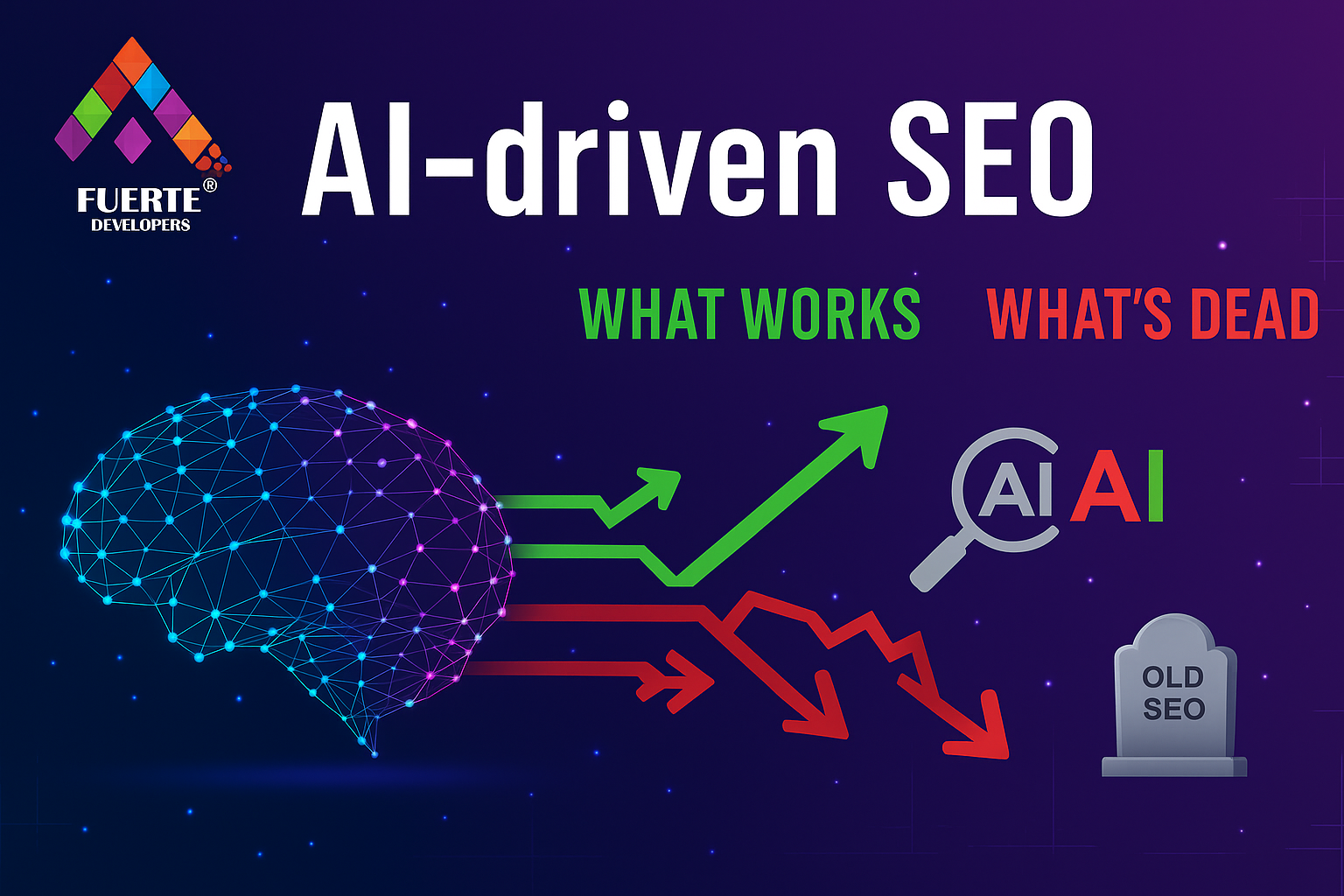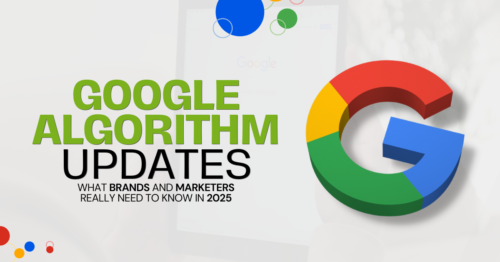Search has changed a lot in the last two years, more than in the last decade. Google’s AI Overviews, SGE, entity-based ranking, better spam filters, and stricter EEAT have all changed how companies get to the top of search results. AI hasn’t killed SEO, but old methods don’t work anymore. Companies that use the new AI-first search are growing faster than ever. Those still using old SEO methods are falling behind.
What Actually Works in AI-Driven SEO
AI has changed how Google understands, ranks, and judges content. But even with these changes, SEO isn’t dead. It’s just changed. If you want to grow today, you need to use AI.
Here’s what’s working right now:
1. Entity-Based SEO—The New Ranking Backbone
Google’s ranking system is changing. Now Google focuses on entities, not only keywords. In simple terms, Google wants to know who you are. If Google understands your work, services, and what you are good at, you can beat out competitors in search results, even if they have more backlinks than you.
How to make it work:
- Create great service or product pages.
- Improve your About, Team, and Location pages.
- Add schema markup (LocalBusiness, Organization, FAQ, Product).
- Make sure your branding and details are the same everywhere online.
Entity clarity = higher trust = higher ranking.
If Google clearly understands your business and trusts it, you’ll rank higher without even trying too hard.
2. EEAT Is Now the Most Powerful Ranking Signal
EEAT (Experience, Expertise, Authority, Trust) is now key to ranking well. It became mandatory. It matters more than keywords or links. Now, it became mandatory.
How you build EEAT now:
- Author bios with real credentials
- Customer reviews & testimonials
- Case studies or past work
- Real photos of your business/team
- Clear contact information
- Policies, terms, and transparency signals
Google favors sites that seem human, expert-backed, and reliable.
3.Topic clusters work better than long, rambling blogs.
Google isn’t after endless content. It wants structured, thorough info. So, instead of one giant 3,000-word guide, try this: make topic clusters. Start with a main page about a topic, then make 8-12 smaller posts that support it, and link them all together. This creates clear expertise that Google loves, and it’s even more useful than just having backlinks.
4. Human-Style Content Performs Better Than AI-Generated Text
Google doesn’t punish AI-created content right away. Though, it’s good at finding content that’s not well-written and sounds like it was made by a computer.
How to make AI-assisted content rank:
- Start with AI only for research or structure
- Rewrite in natural, human tone
- Add real examples, stories, data, or opinions
- Edit manually to remove AI patterns
- Avoid filler and fluff
Humanized content = higher engagement = higher ranking.
AI can be used for looking into things or making initial drafts, yet people have to edit and make the content better.
5. Visual Content Boosts Authority (Images, Infographics, Videos)
Google’s AI systems can now understand images, which means:
- Real product images
- Before after visuals
- Team/workplace photos
- Infographics explaining processes
- Short videos embedded in pages
Doing this builds trust and gets people involved, which helps your site rank higher.
6. Local SEO Is More Powerful Than Ever
If your business has a store, local SEO can take over national competitors in the search results. Because AI Overviews puts local results first, your store will show up at the top if you have good local SEO.
What works for local today:
- Google Business Profile updates 2–4 times/week
- New photos added weekly
- Continuous review collection
- Service-area optimization
- Local keywords in meta titles
- AI-powered Q&A posts
Just by doing local SEO, your business can get about 50–70% of new customers.
7. UX and User Signals Now Outperform Backlinks
Google tracks how real users interact with your website:
- How long they stay
- How deep they scroll
- Which buttons they click
- Whether they return
- Mobile responsiveness
- Page loading time
- Visual layout clarity
Even if your content is good, your site will rank lower if users don’t have a good time on your site.
Improve UX with:
- Fast load speeds
- Clean layout
- Mobile-first design
- Clear headings
- Fewer pop-ups
- Better spacing/typography
Good UX = strong SEO.
What’s Dead
Now let’s talk about what doesn’t work at all anymore.
1. Keyword Stuffing
Repeating keywords too much won’t help your site rank higher anymore. Google’s AI is smart now and gets what you mean, not just how many times you say something. If your content is stuffed with keywords, it looks bad, annoys readers, and can actually drop your site in the rankings.
Instead, focus on writing naturally, use different versions of your keywords, create content that’s actually useful, and show that you’re in the topic.
2. Buying backlinks or using spam links
Google’s AI is now sharp enough to spot unnatural link patterns fast and flags them as manipulation. Instead of boosting your rank, spam links could harm your visibility or get you penalized.
Instead, real authority, good content, strong internal links, and when your brand is mentioned naturally.
3. Stuffing your site with poor blogs
It doesn’t help your SEO either. Now, Google cares about depth, expertise, and topical authority, not just how much you post. Putting out a lot of weak articles can hurt your site’s ranking and quality.
You should try to create fewer but more useful blog posts. Prove you know your stuff and directly answer what people are looking for.
4. “Rewrite and Publish” Tactics
Copying competitor blogs, changing them a bit, and publishing fast? That’s over. Google’s AI knows recycled ideas and lazy rewrites right away. This hurts trust and rankings.
Share what you know, your own stories, examples, and content that is actually worth reading instead of just copying what everyone else is saying.
5. Exact-Match Keywords, Meta Keywords, Stuffing Cities
Old SEO tricks, like exact keywords, meta keyword tags, and listing a ton of cities, don’t help now. Google will ignore websites that try too hard. Using phrases too often or listing city names repeatedly can make your site seem like spam.
Try using common language, make pages for specific locations, focus on keywords that relate to your topic, and prove that you’re an expert.
A simple SEO plan to get your business ranking in 2025:
- Pick Your Core Topics: Zero in on 5–10 key themes for your business.
- Create Main Pages: Dedicate a detailed page to each main topic.
- Build Topic Groups: Write blogs that support each main page and link them together.
- Update Information: Make sure your About, Team, Service, and Contact pages have the newest info.
- Easy to Use: A fast, mobile-friendly, and simple website will keep people interested.
- Add Pictures: Show what you do with photos, charts, short videos, and graphics.
- Get Seen Locally: Update your Google Business Profile, get reviews, and create pages for local searches.
- Use AI Wisely: Use AI to get started, but always have a person make the final edits.
- Watch How It’s Doing: Check Google Analytics 4 and Search Console each week to find ways to make things better.
- Update Regularly: Refresh your main pages every three months to stay relevant and rank well in search results.
The Real Future of SEO
SEO isn’t about shortcuts. By 2025, Google will likely favor brands known for being authentic, trustworthy, and providing actual value. AI’s changes to search also create chances for businesses that prioritize value. This change goes with Search Everywhere Optimization, where being seen on every platform is important. SEO is changing, not disappearing. The businesses that mix human knowledge with AI to give clear, valuable, and trustworthy info will succeed.







